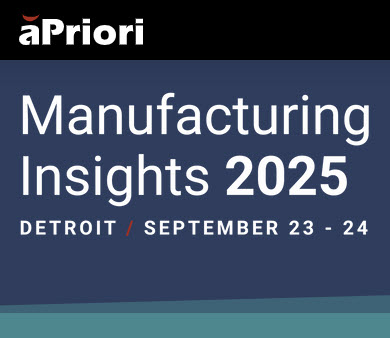October 29, 2025
Accelerating Product Design with AI

Transcript
Artificial Intelligence is Redefining Speed in Product Development
How can companies today keep up with the need for fast product redesign life cycles and increasing pressures from competitors? Craig Melrose has spent over 30 years in operations, consulting with organizations such as McKinsey, to help companies drive business results through improvements in manufacturing, product development, and supply chain. He begins by describing the challenges companies face today with the time pressures of product redesign before explaining how innovations in AI technology can help solve the speed problem.
What Stops Manufacturing from Working Quickly with Design
Craig Melrose: The customer is trying to introduce a new product or replace an existing product on average every one to three years. So in one to three years, engineering needs to design the product, and manufacturing needs to scale up and understand how to build the product. What aPriori can do is find priority areas where performance and opportunity can be freed up. This can happen in two ways. From an engineering standpoint, engineering controls almost 100% of the material cost. So, they’re designing the material, which will then be specified and bid out to suppliers or produced internally. Manufacturing controls almost 100% of the labor. And that’s why the two typically don’t work well together, because engineering doesn’t necessarily fully understand and appreciate ergonomics, including tasks such as lifting, setting, loading, and ejecting machines, as well as those types of workflows, while manufacturing doesn’t fully appreciate that it needs to have this radius so it can actually be pressed and not split, or it needs to have this hole in this location because that’s a master datum, and that needs to go back to the original design for quality control.
And so there’s a lack of appreciation for each other’s worlds, but the two worlds have to collide and collide effectively. So what I think aPriori can do is help the design to be even easier, simpler, faster, but also free up value by designing in a different way, either by using a different supplier, a different set of processes, or any lever possible to free up impact. And then those simplifications in the design will carry over to simplifying manufacturing.
3 Ways to Measure Process Improvements
I think there are three ways to think about business in general, and then we can consider AI on top of it.
- What is the financial impact? Forever, the P&L has been the native language of business. So what is the financial impact that’s going to occur with this change?
- What is the impact on speed? How do I capture impact quickly, in months, not years or decades? And how do I do it at scale? Not a single proof of concept, but enterprise-wide.
- What is the ongoing impact on processes?
What Happens when Process Improvements Pair with AI?
What you see in the press now with AI oftentimes is that the underlying processes didn’t work, and so when they applied AI, it didn’t work, because it was broken to start with. And so I think you have to go clear back to first principles and say, does this process work? Does this workflow work? Do I have the right data to make the right decisions at the right times? And does that work? If so, fantastic.
Then you can ask: What are the new tools that are available to me? AI being one of those. AI is a phenomenal tool, because AI is going to look at existing data and give you new insights that you’ve never seen before. But those insights do not have value or impact if the underlying processes are broken. So I think AI is tricky because people are hoping that AI will just leapfrog the broken workflows and the broken processes, and it won’t. They have to be fixed first. That’s just basic blocking and tackling, and that’s challenging for any organization.
I do think aPriori creates that foundation of data that a company’s never had before. And so then that creates a solid and robust foundation to build upon. AI can then mine that data so it can be leveraged in a multitude of ways.
I think AI should be leveraged internally: all the data that we have inside the company and what insights can that provide in engineering, in manufacturing, and most importantly, across the two, because I think that data has never been linked. That’s internal data. I think you can also leverage AI for external data. What are the market conditions? What are our competitors doing? What are customers saying, both positive and negative, about the products or our customers’ products? Leverage all of that data to feed back into the internal data to then design better and manufacture better at speed, at scale, so that you can achieve that one-year, three-year product refresh, and deliver exactly what the customer wants, what the competition is not able to do, and all built upon this robust data foundation that aPriori is bringing both to engineering and manufacturing.







